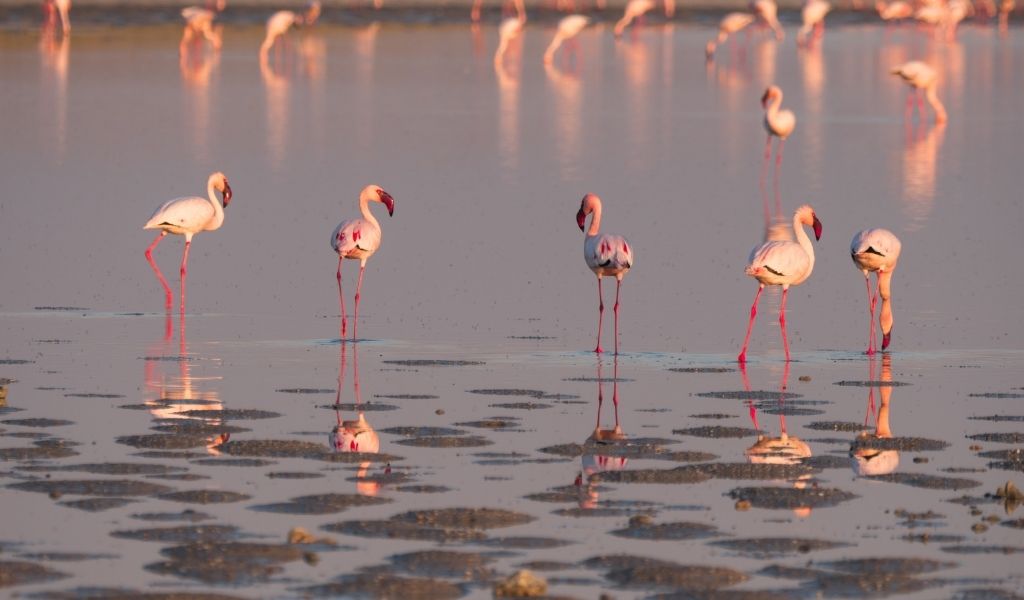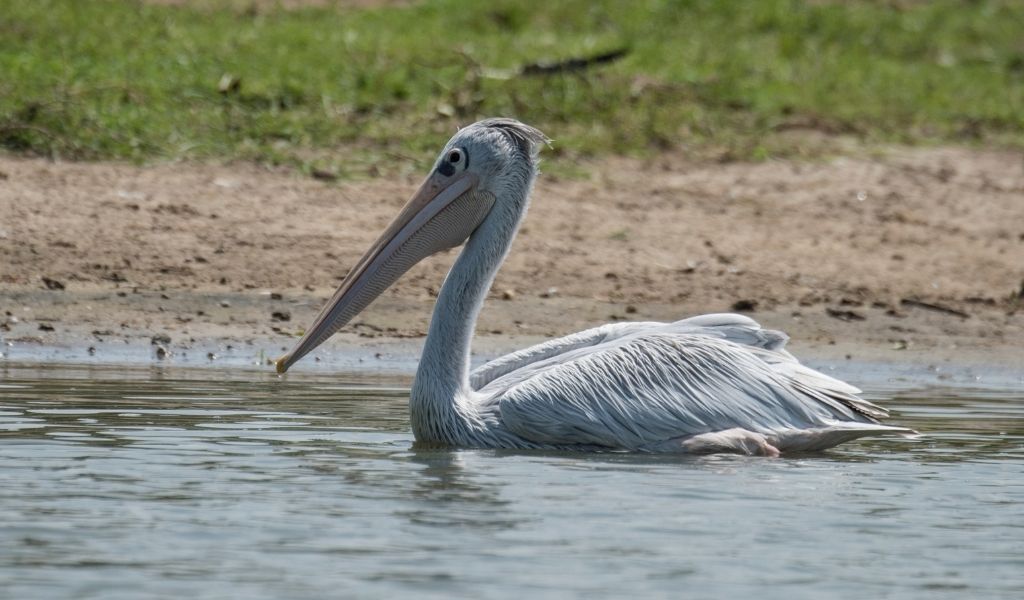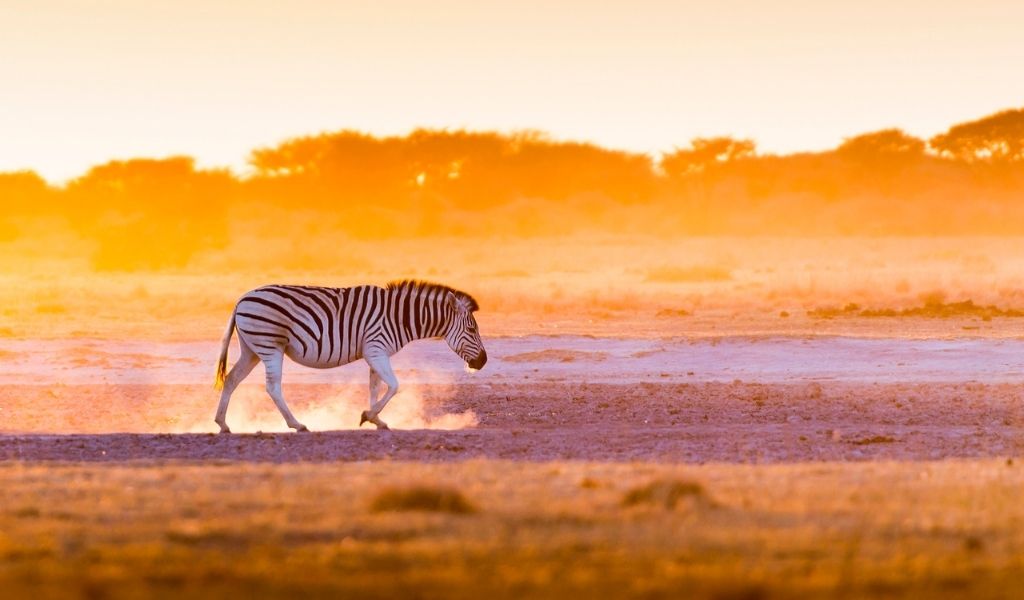Much of beautiful Botswana is filled with vast stretches of untouched wilderness and filled to the brim with stunning wildlife.
As Botswana plays host to two contrasting and extreme environments – the arid Kalahari on one hand and the vibrant watery Okavango on the other- it is easy to understand why birdwatching in this country is as good as it gets.
Although you’ll be able to spot all kinds of birds across this magnificent country, nothing compares to the sheer volume of winged species you’ll see in Nata Bird Sanctuary. Keep reading as we explore one of the country’s top destinations for bird watching. Come with us as we take an in-depth look at Nata, Botswana.
When To Go Birding in Botswana

Despite the lack of endemic species of birds, Botswana has managed to become one of Africa’s top birding areas. This is mainly due to the country’s fierce protection of several threatened and endangered species.
Each season shows off its own parade of feathered friends, so the bird-watching season is all year round. A large number of species show up during the summer months when the migrants arrive. What better way to enjoy searching the heavens than in comfortable summer attire?
The winter months are just as fascinating. Visit Botswana in the dry winter months and see a great number of birds situated near permanent water sources in the area. The birds are also attracted to the drying mud as they get the opportunity to feed on trapped fish and crustaceans.
The Remarkable Nata Bird Sanctuary

The Nata Sanctuary is a breathtaking reserve that is home to about 165 bird species. This community-managed project is the only protected reserve located in the northeastern periphery of Sowa Pan. This pan is one of three large depressions found within the Makgadikgadi Pans.
The sanctuary is located 105 miles (170 km) northwest of the Francistown area. This makes it the perfect place to stop when you are en route to Kasane or Maun.
Run by the Nata Conservation Trust, the Sanctuary covers an area of 230 m² (595.7 km²). The Trust works hard to maintain Botswana’s wonder and beauty. The Conservation’s aims include:
- Reducing unemployment in Nata and surrounding villages.
- Fostering awareness and appreciation for Nata’s variety of birds.
- Boosting populations of various bird species and other animals threatened with extinction.
- Promoting birding tourism (also called avitourism), and contributing to Botswana’s tourism industry.
Due to its dedication, Nata is now one of the three breeding grounds of flamingos in Africa. It has been recognized by UNESCO as one of the largest breeding sites of lesser and greater flamingos in the world.
Birds to Expect at Nata

Now for the best part! We bet you are curious to know about all the marvellous avifauna you can expect at Nata.
Tourists flock to catch a glimpse of the famous water birds, the lesser and greater flamingos. These birds migrate from Namibia. Greater flamingos are attracted to the brine shrimp in the area while the lesser flamingos feed on algae. All of these food sources can be found in abundance in the waters of the salt pan.
The great white pelican, the pink-backed pelican, and ostriches are the most dominant species in the area. They arrive yearly in large numbers as part of their winter migration. Some other notable species situated in the area are avocet, black-winged stilt, blacksmith lapwing, and black-necked grebe, among many many more.
There is nothing like the experience of training your binoculars on the clouds and seeing spectacular birds effortlessly ride the thermals above you. We guarantee you will be coming back for more.
Wildlife and Fauna

What would an African trip be without wildlife to accompany it? While the main focus of Nata is the bird sanctuary, it is impossible to step foot in a place with such a rustic African atmosphere and not stay for some wildlife viewing.
If you peel your eyes away from the skies and the waters for long enough, you may spot some antelope, hartebeest, kudu, reedbuck, springbok, steenbok, and springhare. Tourists can also look forward to jackals, foxes, monkeys, squirrels, eland, and zebra.
Living the Life At Nata
At Nata village, there are a variety of accommodation options to choose from. Luxury lodges, hotels, self-catering chalets, and campsites can all be found in and around the area.
The more famous option is to rent some tents at the campsite located near the entrance of the park. It’s not considered complete ‘roughing it’ as there are hot and cold water showers and flush toilets available. Plus, you can also make use of the braai (barbeque) facilities and enjoy some chops and mielies in the bush!
One of the famous features of the campsite is the massive fallen baobab tree, which collapsed in 1992. Despite what should have been a devastating fall, the enormous tree survived and has continued growing horizontally. It is a unique sight to behold and a brilliant spot for some photos.
For those of you worried about accessing Nata, there is absolutely nothing to fear. The main road that provides access to the Nata Bird Sanctuary is well-maintained. But, bear in mind that during the wet season, certain areas within the sanctuary may require a four-wheel drive.
Take Flight: Nata Bird Sanctuary

Astonishing Botswana’s many attractions will have you soaring on cloud nine. The feelings of euphoria when you travel through a place like this are endless.
Yet another incredible activity awaits you in this Southern African utopia. There is no excuse not to book your Botswana trip and visit Nata Bird Sanctuary!
